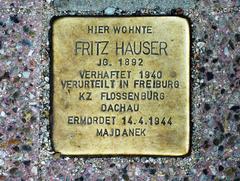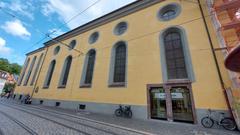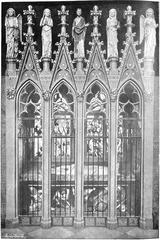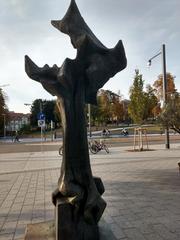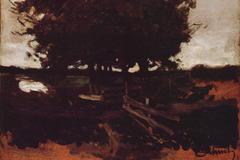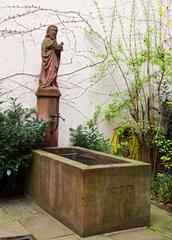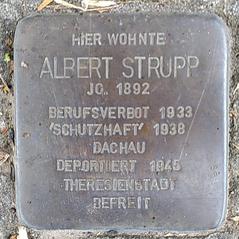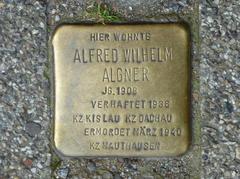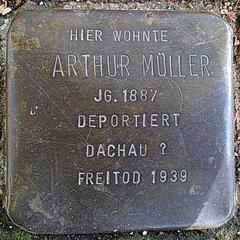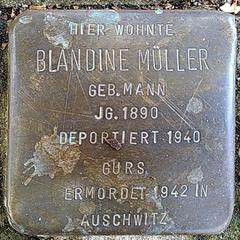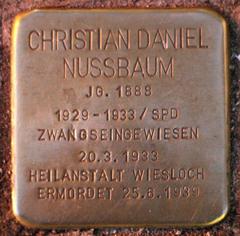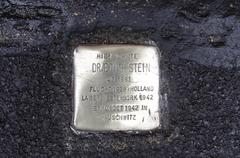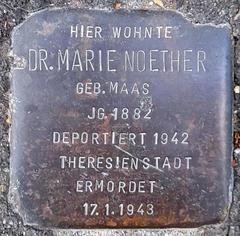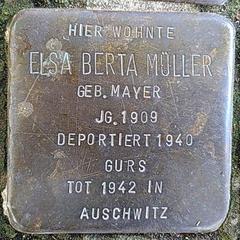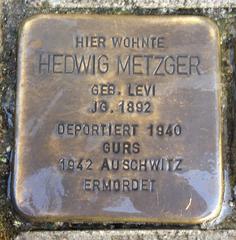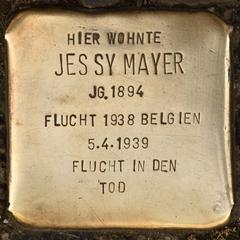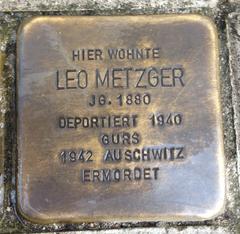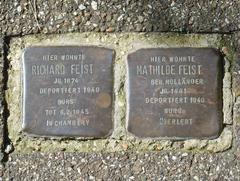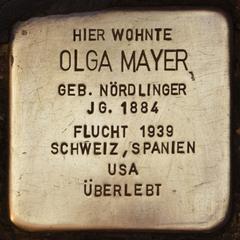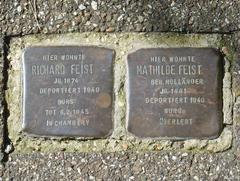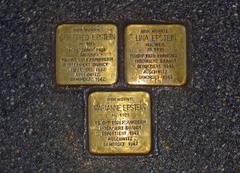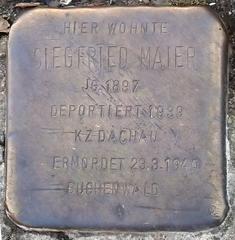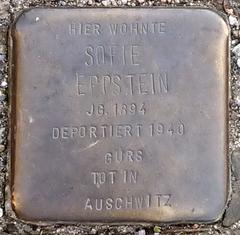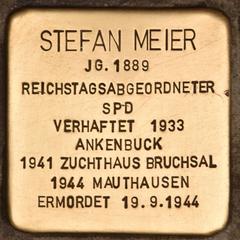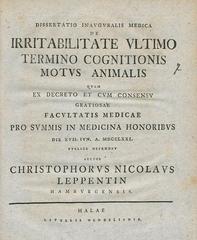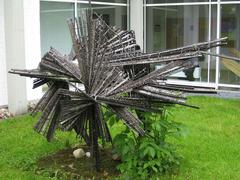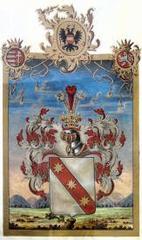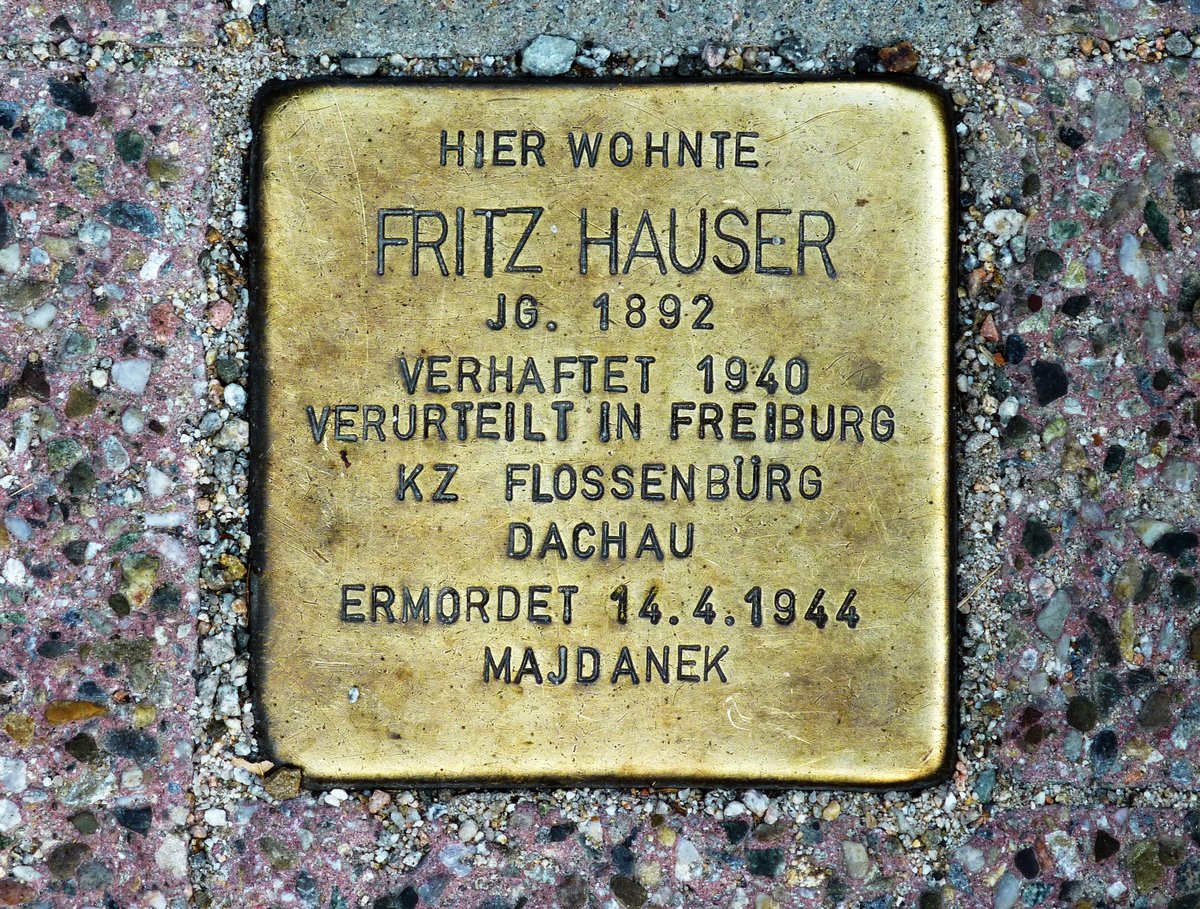
Stolperstein Fritz Hauser Freiburg: Visiting Hours, Tickets, and Historical Information
Date: 14/06/2025
Introduction
The Stolperstein dedicated to Fritz Hauser in Freiburg im Breisgau is more than a simple memorial—it is a bridge between past and present, an invitation for residents and visitors alike to engage with the city’s history and commemorate those who suffered under Nazi persecution. As part of the world’s largest decentralized Holocaust memorial, the Stolpersteine project transforms everyday city streets into sites of remembrance and reflection. This guide provides detailed information about the Fritz Hauser Stolperstein, including historical context, cultural significance, practical visitor tips, accessibility, and suggestions for deeper engagement with Freiburg’s memorial culture.
(holocaust.org.uk, germany.info, folklife.si.edu)
Table of Contents
- About the Stolpersteine Project
- Fritz Hauser and Historical Context
- Significance of the Fritz Hauser Stolperstein
- Location and Accessibility
- Visiting Hours and Ticket Information
- Visitor Tips and Respectful Engagement
- Community and Educational Initiatives
- Special Events and Commemorations
- Other Memorial Sites in Freiburg
- Frequently Asked Questions (FAQ)
- Conclusion and Call to Action
- References
About the Stolpersteine Project
The Stolpersteine (“stumbling stones”) project was launched by German artist Gunter Demnig in 1992 as a grassroots, decentralized memorial to the victims of Nazi persecution. Each Stolperstein is a 10x10 cm brass plaque set into the pavement outside the last freely chosen residence of a victim, bearing their name, date of birth, fate, and, where known, the place and date of their death. As of 2025, over 100,000 Stolpersteine have been installed across more than 1,265 cities in 30 European countries, making it the largest Holocaust memorial in the world.
The project’s power lies in its decentralization—remembrance is woven into the fabric of everyday urban life, inviting passersby to encounter history as they move through the city.
(stolpersteine.eu, stolpersteine-in-freiburg.de, de.wikipedia.org)
Fritz Hauser and Historical Context
Fritz Hauser was a Jewish resident of Freiburg im Breisgau who, like many others, became a victim of Nazi persecution during the Third Reich. He was deported and ultimately murdered at the Majdanek concentration camp. Hauser’s Stolperstein is located at Zunftstraße 5, marking the last place he lived freely before his deportation.
Freiburg, historically home to a vibrant Jewish community, experienced the same tragic fate as many German cities under Nazi rule. Jews, as well as Sinti and Roma, political dissidents, homosexuals, Jehovah’s Witnesses, and people with disabilities, were systematically targeted, deported, and murdered. The Stolpersteine in Freiburg commemorate the individual lives lost in these atrocities, restoring names and stories to those who were erased from public memory.
(stolpersteine-in-freiburg.de, tracesofwar.com)
Significance of the Fritz Hauser Stolperstein
The Stolperstein for Fritz Hauser is one of over 500 in Freiburg, and it stands as a micro-memorial, personalizing the enormity of the Holocaust. The deliberate placement at street level requires visitors to bow their heads to read the inscription—a symbolic gesture of respect. The act of “stumbling” over these stones invites reflection and ensures that the memory of individuals like Fritz Hauser becomes part of the public consciousness.
The Stolpersteine’s modest size and the gleaming brass plaque draw attention to the names engraved, embodying both the ordinariness and the tragedy of the victims’ lives.
(stolpersteine-in-freiburg.de, folklife.si.edu)
Location and Accessibility
- Address: Zunftstraße 5, Freiburg im Breisgau, Germany
- Access: The Stolperstein is embedded in the public sidewalk and is accessible 24/7. Freiburg is a highly walkable city with extensive bike paths and a reliable public transport network; tram lines 1, 3, and 4, as well as several bus routes, provide easy access to the Old Town and surrounding neighborhoods.
- Wheelchair Accessibility: The site is generally accessible, though some sidewalks in historic areas may be uneven or cobblestoned. Plan your route in advance if you have specific mobility needs.
(stolpersteine-in-freiburg.de, visit.freiburg.de)
Visiting Hours and Ticket Information
- Visiting Hours: The Fritz Hauser Stolperstein is accessible at all times, as it is located on a public sidewalk.
- Admission: Free of charge; no tickets or reservations are required.
- Best Time to Visit: Daylight hours (9:00 AM – 6:00 PM) are recommended for visibility and safety.
During special commemorative events—such as International Holocaust Remembrance Day (January 27) or the Kristallnacht anniversary (November 9)—guided tours and ceremonies may be organized. Some of these may require advance sign-up through local tourism or memorial websites.
(stolpersteine-in-freiburg.de)
Visitor Tips and Respectful Engagement
- Pause and Reflect: Take time to read the inscription quietly. Bowing your head is a symbolic gesture of remembrance.
- Clean the Stone: It is customary to gently polish the brass with a soft cloth to keep the name visible.
- Tokens of Remembrance: Placing a small stone, flower, or candle by the Stolperstein is a respectful act, echoing Jewish mourning traditions.
- Photography: Discreet photography is allowed. Please respect the privacy of local residents and avoid blocking pathways.
- Leave No Trace: Ensure that any tokens left do not obstruct the sidewalk or create litter.
- Learn More: Scan QR codes (if available) or consult the Stolpersteine Freiburg website for biographies and background information.
Community and Educational Initiatives
Freiburg’s Stolpersteine project is deeply rooted in community engagement. Volunteers, students, and local organizations sponsor, clean, and research the stones. Schools often involve students in documenting biographies and translating memorial texts. Descendants of victims sometimes return to participate in installation ceremonies, fostering cross-generational and international dialogue.
(stolpersteine-in-freiburg.de)
Special Events and Commemorations
- Annual Cleaning Days: Community members gather to clean and polish Stolpersteine, especially ahead of major memorial dates.
- Guided Tours: Local historical societies and educational groups offer guided walks that provide rich context about the victims commemorated by Stolpersteine.
- Commemorative Ceremonies: Events often include biography readings, laying of stones or flowers, and moments of silence.
Check the events page or the Freiburg Tourist Office for schedules.
Other Memorial Sites in Freiburg
Enhance your visit by exploring related sites:
- Jewish Cemetery on Elsässer Straße, with historical graves and memorials.
- Holocaust Memorial at Old Synagogue Square, commemorating the destroyed synagogue and Freiburg’s Jewish victims.
- Freiburg City Archive, which offers exhibitions and documents on the city’s wartime history.
- Other Stolpersteine: Over 500 stones are distributed throughout the city, many within walking or biking distance.
(stolpersteine-in-freiburg.de, stolpersteine.eu)
Frequently Asked Questions (FAQ)
Q: Is there an admission fee to visit the Fritz Hauser Stolperstein?
A: No, it is free and accessible to all.
Q: What are the best hours to visit?
A: Daylight hours (9:00 AM – 6:00 PM) are recommended for best visibility.
Q: Are guided tours available?
A: Yes, especially during commemorative events. Check the Stolpersteine Freiburg website or local tourist office for details.
Q: Is the site wheelchair accessible?
A: Generally yes, though some sidewalks may be uneven. Plan accordingly.
Q: Can I take photographs?
A: Yes, but be respectful and avoid disturbing residents or blocking walkways.
Q: Do I need tickets or reservations?
A: No, except for some guided tours or special events.
Conclusion and Call to Action
The Fritz Hauser Stolperstein in Freiburg stands as a powerful testament to an individual life lost during the Holocaust, woven into the city’s streets as a daily reminder to confront intolerance and remember the past. By visiting, reflecting, and participating in community remembrance, you help ensure that the memory of Fritz Hauser and countless others endures. Enhance your experience by exploring nearby sites, joining guided tours, and supporting ongoing educational and memorial efforts.
For more information, digital maps, and updates on commemorative events, visit the official Stolpersteine Freiburg website.
References
- Stolpersteine: Stumbling Blocks of Memory — Holocaust.org.uk
- Jewish Life in Germany — Germany.info
- Stumbling Stones Holocaust Memorials — Folklife Magazine Smithsonian
- Stolpersteine in Freiburg
- Stolpersteine Project Overview
- Stolpersteine in Freiburg - About the Project
- Stolpersteine in Freiburg - History
- Stumbling Stone Zunftstraße 5 — TracesOfWar.com
